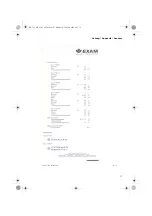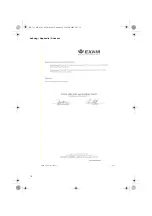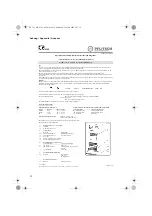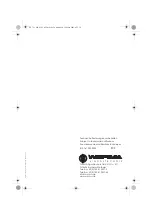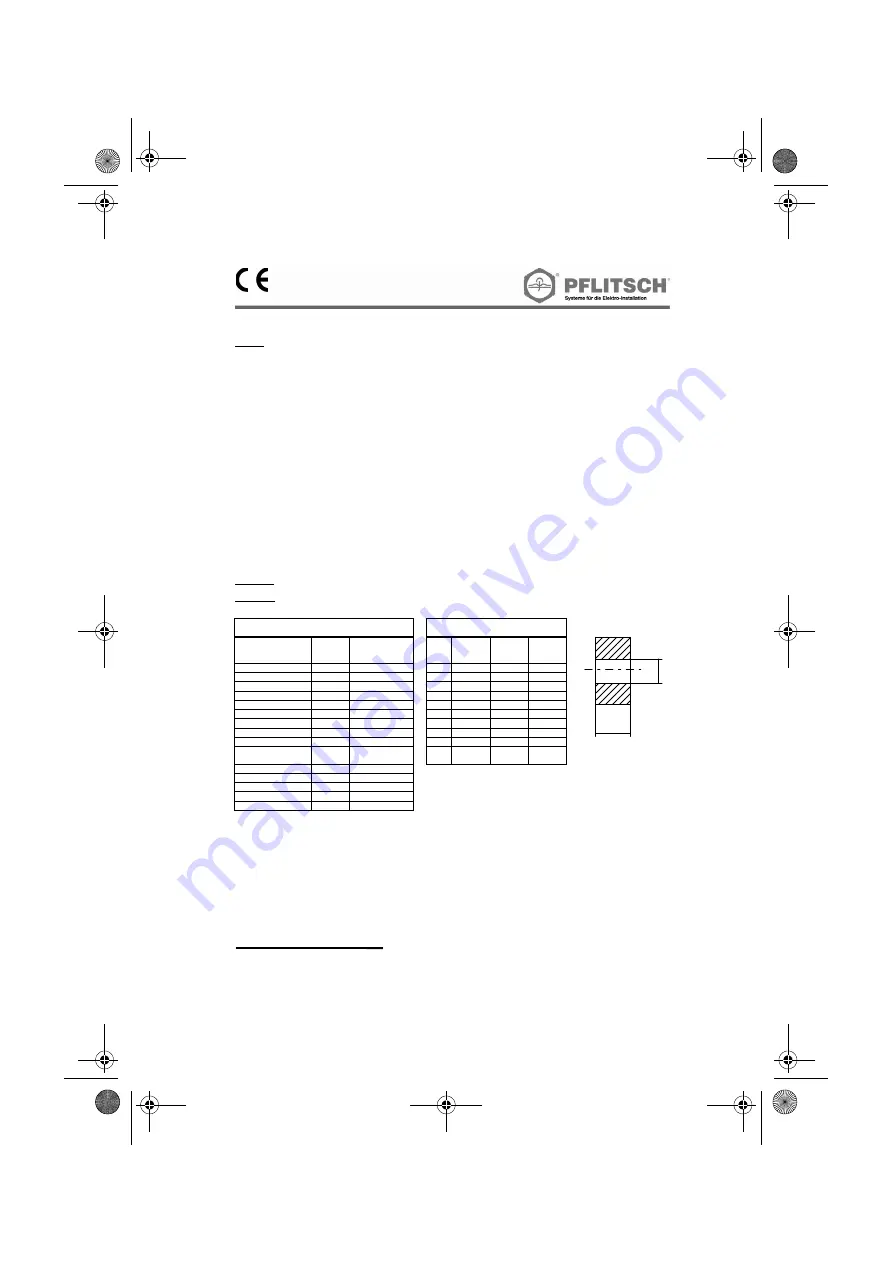
Anhang / Appendix / Annexes
21
0102
Updated: 16.08.2004
Page 2 of 2
This document is produced electronically and is legally binding, even without an original signature.
Cable glands with sealing inserts made from LSR and TPE-V are supplied with a connection thread sealing ring made from LSR.
Assembly
Select the cable gland depending on the bore/thread bore (thread type, length and diameter) in the casing and the external diameter of the cable or the
line. Unscrew the cable gland. Screw the double nipple into the bore in the casing, or counter it using a counter-nut if you are using a through bore.
Use the connection dimensions for through bores given in
Table 2.
Make sure that the connection thread – sealing ring is in the right position in the cable gland groove. The connection thread – sealing ring seals the
double nipple against casing wall. When the cable glands are located very close to each other, the socket spanner Ref. M 28 can be used to help
installation (see catalogue M 4.03 GKU pages 92 and 93 and catalogue 10.02. page 61).
Minimum wall thickness for installation in devices with thread bores : 5.0 mm (plastic); 3.0 mm (metal)
Minimum wall thickness for installation in devices with through bores : 2,0 mm (plastic); 1,0 mm (metal)
Shorten the cable / line to the right length to reach the connection point. Slide the pressure screw and the appropriate sealing insert over the cable
sheath (respect order and position). Insert the ends of the cable / line into the casing through the double nipple. Press the sealing insert into the double
nipple. Check that the sealing insert is in the right position. Then screw the pressure nut tightly onto the double nipple. For this operation you can also
use the M 28 socket spanner as a tool. The cable / line sheath is now sealed. The cable / line sheath should always be pushed inside the casing to make
sure that the cores are doubly insulated.
If the cable glands are properly fitted, it is possible to comply with IP 68 casing protection level according to EN 60529.
Indications for strain relief of the screwed cable gland
The cable gland with standard pressure screw is only suitable for permanently laid cables and lines. In this case the operator must provide for suitable
measures to supply strain relief.
Sealing rings mustn’t be cut out with a knife
The maximum acceptable number of cable glands depends on thread size and available space. The clearance and leakage distance to metallic
connection parts like clamps must be observed. Casing bores that are not in use must be sealed shut with an explosion-proof plug. Cable glands with
corresponding thread sizes must be closed off with a closed sealing insert or with a UNI E Ex e dummy sealing insert. Unused bores on multi sealing
inserts must be closed off with a stud.
Dismounting
Dismounting must be carried out in reverse order.
Maintenance
The cable glands must be included in the electrical equipment’s inspection and maintenance programme.
Table 1:
Table 2:
Colour codes for PVC sealing inserts for different
sealing ranges
Connection dimensions for through bores
Sealing range from -
to
( mm )
Colour
code
Colour
abbreviation
Pg d
[mm]
0/+ 0,3
metr. d
[mm]
0/+0,3
6,5 - 4,0
yellow
ge
7
12,5
M 10
10,0
8 - 5,0
grey
gu
9
15,5
M 12
12,0
9,5 - 6,5
black
sw
11
19
M 16
16,0
10,5 - 7,0
green
gr
13,5
20,5
M 20
20,0
13,0 - 9,0
red
rt
16
22,5
M 25
25,0
15,5 - 11,5
white
ws
21
28,5
M 32
32,0
18,0 - 14,0
blue
bl
29
37
M 40
40,0
20,5 - 17,0
brown
br
36
47
M 50
50,0
25,0 - 20,0
orange
or
42
54
M 63
63,0
28,0 - 24,0
light
yellow
hg
48 60 M
72 72,0
32,0 - 27,0
anthracite
an
34,0 - 29,0
light blue
hb
36,0 - 32,0
pink
rs
40,0 - 36,0
white
ws
44.0 - 39,0
white
ws
pp Benno Saßenbach
Stamp, date, signature
d
1,0 min
N. B.:
For sheet thicknesses of <1.5 mm, PY flat sealing rings must also
be used with metal cable glands in order to obtain a secure seal.
310_761_003_0305_A5.fm Seite 21 Mittwoch, 16. März 2005 4:35 16











